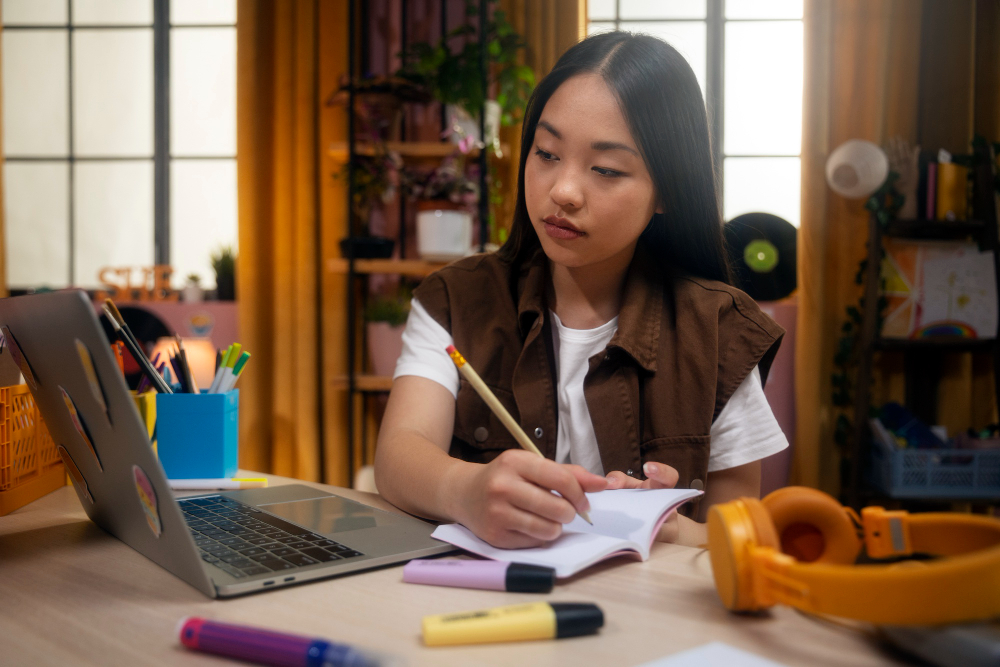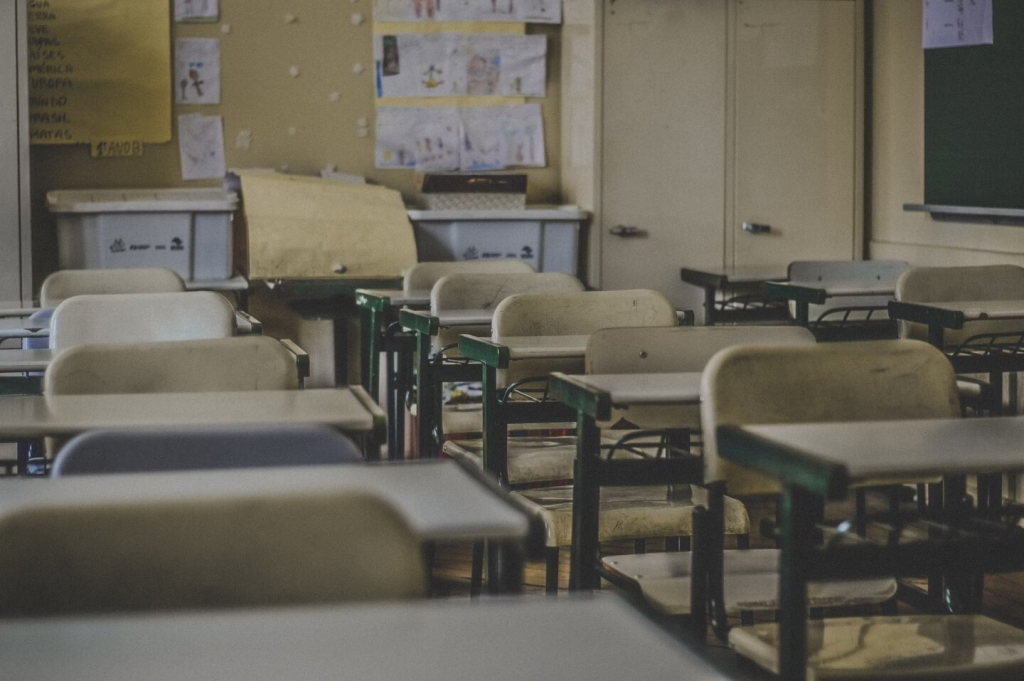
In recent months, coinciding with the onset of summer, the Department of Education(DepEd) has continually suspended face-to-face classes in all public schools, especially in National Capital Region, due to a series of record-breaking heatwaves in the Philippines.
These extreme heat, typically occurring during the hottest months from March to May, present significant challenges for students engaged in on-site learning dealing with unbearable heat in this scorching weather.
The intense heat not only pose a risk to students’ health, making them more vulnerable to heat-related illnesses, but also severely impact their ability to focus and absorb information during study sessions.
The Philippine Atmospheric, Geophysical, and Astronomical Services Administration (PAGASA) attributes these intense heat episodes to the El Niño event, with a heat index soaring above 42ºC in certain regions. This has led to the closure of nearly 4,000 schools and the adoption of alternative delivery modes of learning to ensure the safety and continued education of students.
Why heatwave in the Philippines hits different?

Heatwaves in the Philippines are particularly intense due to the country’s geographical location near the equator, resulting in consistently high heat index and high humidity levels. Urban heat islands and limited access to cooling systems worsen the situation, while socio-economic factors and infrastructural challenges make it difficult for many people to cope with severe heat.
The impact of heatwaves includes health risks such as dehydration and heat stroke, challenges for agriculture, and frequent power outages. Human induced climate change, particularly global warming, also increase the frequency and intensity of extreme heat, adding further strain to the heat index of the country.
How extreme heat affect the body?
Hot weather can aggravate existing health issues, particularly affecting the elderly and those with chronic illnesses, as well as individuals in marginalized communities who may not have access to air conditioning and are often employed in outdoor manual labor.
Infants and young children are especially susceptible due to their lower sweat production and higher body surface area to volume ratio, which can lead to rapid heat prostaration. Additionally, children’s propensity to engage in person classes or face-to-face classes without adequate hydration or rest increases their risk during heatwaves.
Continued exposure to high temperatures can lead to several health issues, including:
Dehydration: High temperature and humidity can cause children to sweat more, resulting in loss of fluids and electrolytes, which can lead to dehydration if not properly managed.
Heat exhaustion: Symptoms of heat fatigue include dizziness, nausea, and fatigue, which can affect students’ ability to concentrate on their studies.
Heat cramps: These are painful, involuntary muscle spasms that often occur in a person who sweat a lot during strenuous activity in the heat.
Heatstroke: This severe condition can cause confusion, loss of consciousness, and even death if not treated promptly.
Respiratory issues: Heatwaves can exacerbate respiratory conditions such as asthma, making it difficult for a person to breathe comfortably.
The impact of high heat index in student learning

In the Philippines, many public schools lack sufficient cooling systems, leading to uncomfortably high temperature in classroom. This can hinder a child’s ability to concentrate and learn effectively, while also posing risks of heat-related illnesses. The heat can be particularly challenging during outdoor activities, physical education classes, or sports practices conducted in the middle of the day.
Hot weather significantly impact student learning in the following ways:
Decreased focus: Elevated temperatures can impair concentration of a children, resulting in decreased productivity and difficulty retaining information.
Reduced energy levels: The heat can cause fatigue and lethargy, making it hard for a person to stay motivated and engaged in their studies.
Discomfort: Excessive heat creates an uncomfortable learning environment, impacting students’ development to focus and perform academically.
It’s important for schools to ensure proper hydration, schedule outdoor activities during cooler parts of the day, and provide cool, shaded areas for rest. Additionally, schools should educate children on recognizing the signs of heat exhaustion and heatstroke as part of their health and safety protocols.
Conquering the Heatwave: Strategies for Home Study Amidst Scorching Days
As heatwaves become a more frequent reality in this country, it’s crucial to ensure that our children’s education continues uninterrupted during remote learning period. To facilitate an effective and comfortable classes at home, consider these inventive strategies that cater to both their well-being and educational needs.
1. Create a Cool Study Space
Designate a cool, comfortable space in your home specifically for studying. Use fans, air conditioning, or open windows for proper ventilation. If you don’t have air conditioning, consider investing in a good-quality fan to keep the air circulating and maintain a comfortable temperature.
2. Optimize Your Study Schedule
Take advantage of the cooler parts of the day, such as early mornings or late evenings, to schedule your study sessions. This way, you can avoid the peak heat hours and maintain your focus and energy levels.
3. Stay Hydrated
Drinking plenty of water throughout the day is essential to staying hydrated and maintaining optimal cognitive function. Keep a water bottle nearby while studying and take regular sips to avoid dehydration.
4. Use Cooling Aids
Incorporate cooling aids such as cold packs, wet towels, or handheld fans to stay refreshed while studying. Placing a damp cloth on the back of your neck or wrists can help you cool down quickly.
5. Wear Light, Breathable Clothing
Dressing appropriately for hot weather can make a significant difference in your comfort level. Wear light, breathable clothing made of natural fibers such as cotton or linen to help regulate your body temperature.
6. Take Frequent Breaks
Allow yourself to take short breaks throughout your study sessions to rest, cool down, and recharge your energy levels. Stretching or taking a brief walk can help improve circulation and refresh your mind.
7. Engage in Interactive Learning
Keep your study sessions engaging and interesting by incorporating interactive activities such as quizzes, videos, or virtual field trips. These activities can help break up the monotony of traditional studying and keep you motivated.
8. Practice Mindfulness and Relaxation
Incorporate relaxation techniques such as deep breathing exercises, meditation, or yoga into your routine. These practices can help manage stress, improve focus, and provide a mental break during intense study periods.
9. Asynchronous Learning
If possible, opt for asynchronous learning, which allows you to work on lessons at your own pace. This flexibility enables you to choose the most comfortable times of the day for studying.
10. Monitor Your Well-being
Regularly check in with yourself and others about how you’re coping with the heat. If you experience any heat-related symptoms, such as dizziness or headaches, take action immediately and seek help if necessary.
11. Keep Electronics Cool
Electronics like laptops, tablets, and smartphones can generate additional heat, which can be problematic in hot weather. Keep devices on a hard surface and avoid using them on soft surfaces like beds or sofas, as this can block ventilation. Consider using a cooling pad for laptops if necessary.
12. Adjust Lighting
Incandescent and other types of traditional lighting can generate excess heat. Opt for energy-efficient LED or fluorescent lights, which produce less heat and consume less energy.
13. Utilize Libraries or Co-working Spaces
If your home environment becomes too hot and uncomfortable, consider studying in a local library or co-working space that has air conditioning. This change of scenery can also provide a fresh perspective and enhance productivity.
14. Maintain a Healthy Diet
Eating light, healthy meals and snacks can help you stay focused and energized during hot weather. Avoid heavy, greasy foods that can make you feel sluggish and dehydrated.
15. Set Realistic Goals
In hot weather, it’s important to be mindful of your energy levels and set achievable goals for your study sessions. Break your tasks into manageable chunks and reward yourself for completing them.
16. Use Virtual Study Groups
Joining virtual study groups can provide motivation and support while studying from home. Discussing topics with peers can also keep you engaged and accountable.
17. Keep Your Space Clean and Clutter-Free
A clean, organized study space can promote focus and productivity. Remove clutter and keep your study area tidy to create a more conducive learning environment.
18. Limit Screen Time
Excessive screen time can cause eye strain and fatigue, especially in hot weather. Take breaks from screens to give your eyes a rest and refresh your mind.
19. Practice Good Sleep Hygiene
Getting quality sleep is crucial for maintaining focus and energy levels. Establish a regular sleep schedule and create a comfortable sleep environment by keeping your bedroom cool and dark.
20. Seek Professional Help if Needed
If you find it difficult to cope with the heat and its impact on your studies, seek professional help. A doctor or counselor can provide advice and support tailored to your specific needs.
How Schools Can Adapt to Climate Change

In the long run, while remote learning can be effective, it is essential for schools to actively adapt to climate change and create safe learning environments for students, regardless of the weather. Schools can implement several measures to enhance safety and comfort:
Integrate Vegetation: Planting trees and shrubs provides natural shade, cools the environment, and improves air quality.
Create Relaxing Environments: Naturalized spaces reduce stress and foster a calm, conducive learning atmosphere.
Enhance Building Climate Control: Sustainable solutions like insulation, ventilation, and light-blocking materials regulate indoor temperatures.
Improve Air Circulation: Ensuring proper ventilation maintains good indoor environmental quality and overall health.
By adopting these strategies, schools can create resilient and sustainable learning environments for students despite climate challenges.
Cooling Down
Up to date, the Department of Education has issued guidance to both public and private school education officials in different regions, advocating for the continuation of suspended in person classes as a response to the sweltering heat.
This directive underscores the potential detrimental effects of high temperatures on both the efficacy of classroom instruction and the health and safety of students.
Furthermore, the DepEd is contemplating a shift back to a traditional academic calendar, as advised by the state weather bureau, which would strategically position school breaks during the peak heat months of April and May.
The onset of heatwaves in the Philippines presents a unique set of challenges for home-based learning. However, by adopting forward-thinking and creative strategies, students can pursue their academic goals comfortably and effectively, without worrying about the health warnings posed by the heatwave.
By fostering a cool learning environment, ensuring adequate hydration, and integrating heat-combating activities, students can maintain concentration and productivity. Moreover, prioritizing the well-being of students and sustaining open lines of communication are pivotal in facilitating a fruitful educational experience amidst the heat.

Celebrate Life’s Milestones in Camella!
Make unforgettable memories in a Camella home.
Our communities are designed to elevate your living experience.


